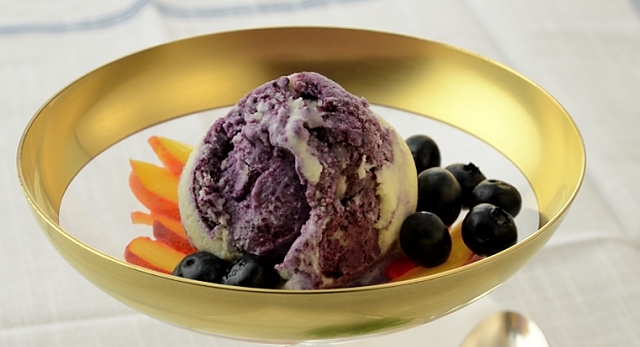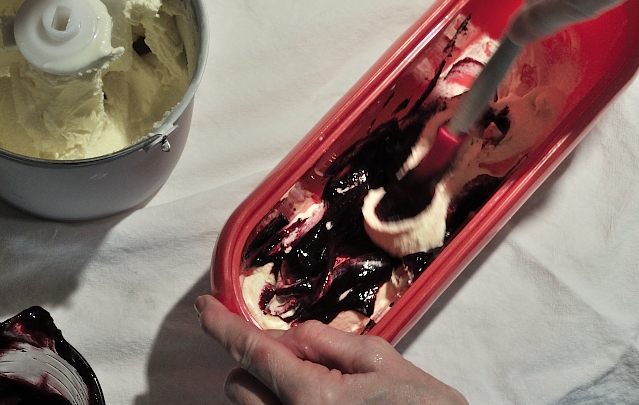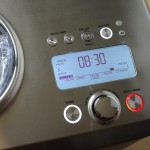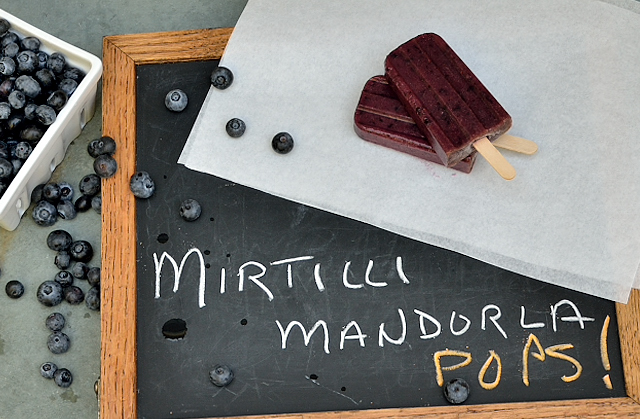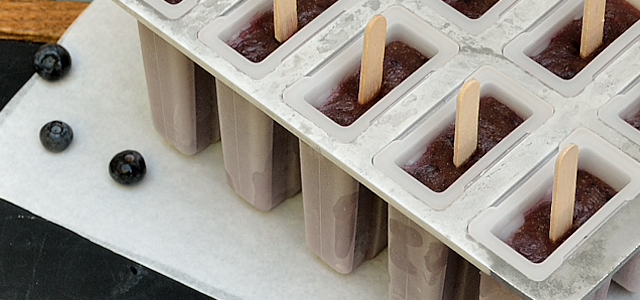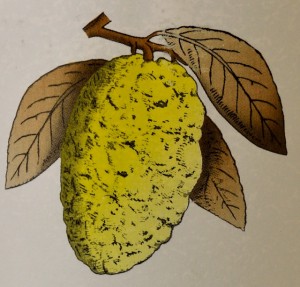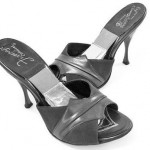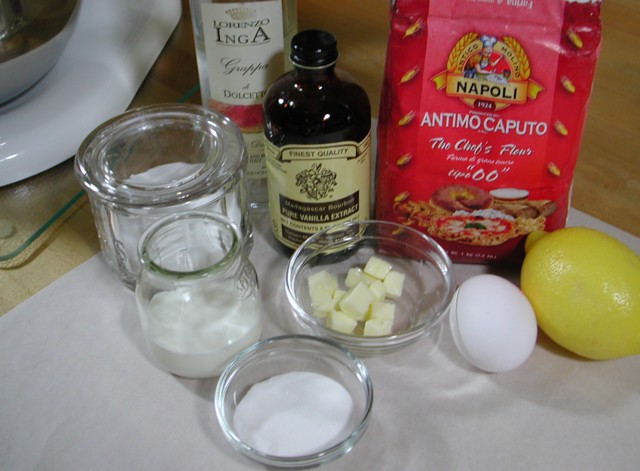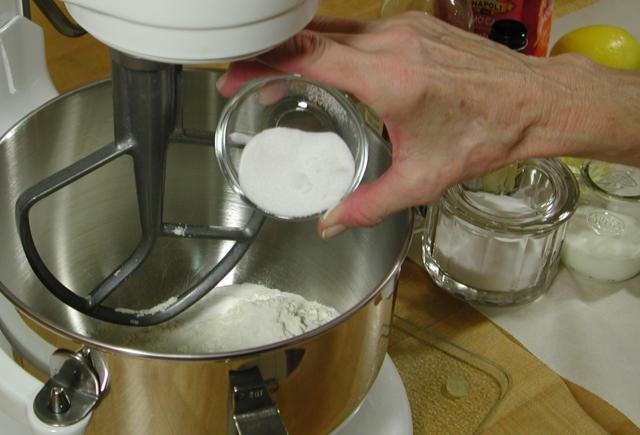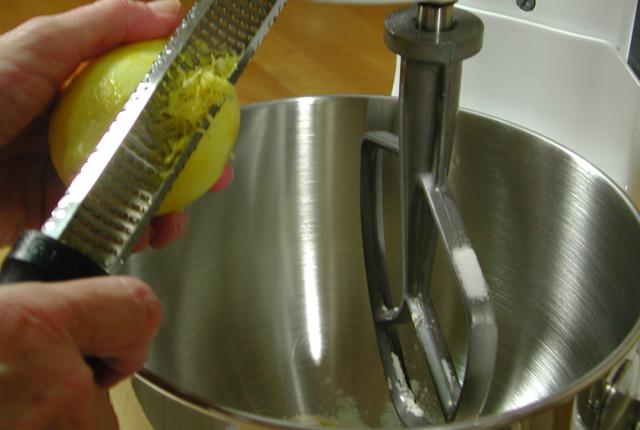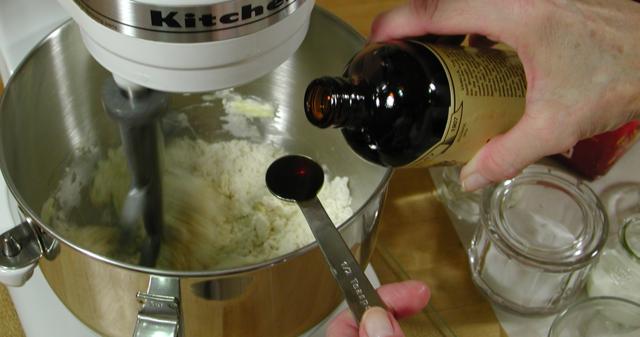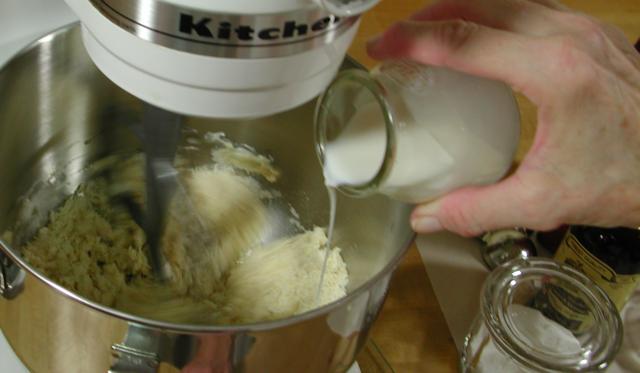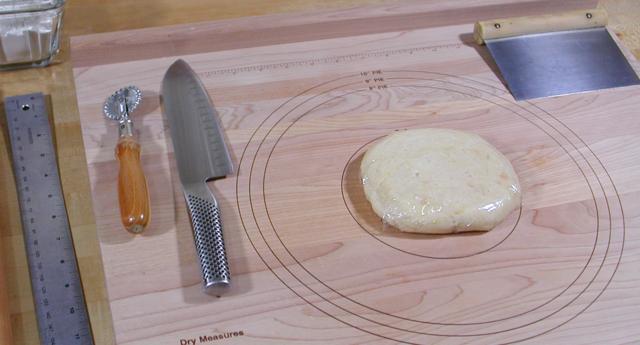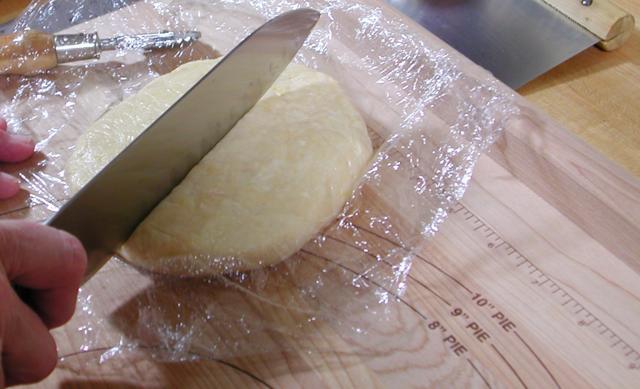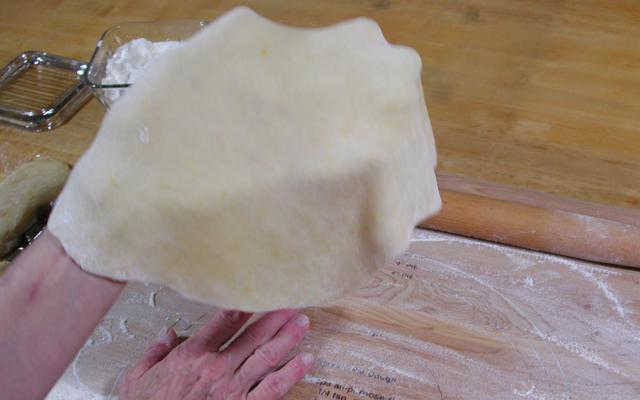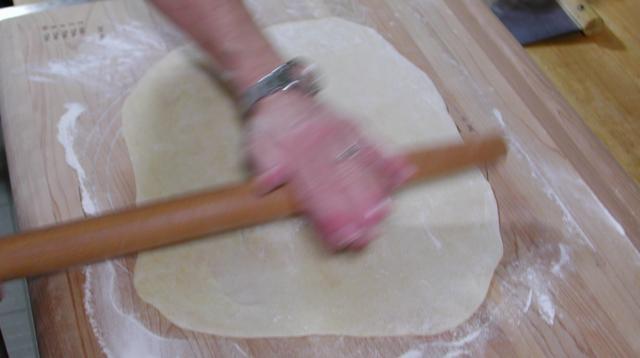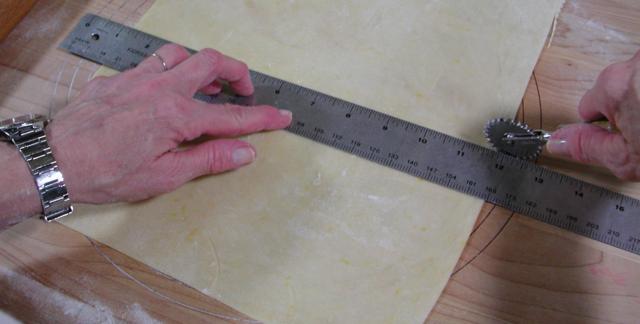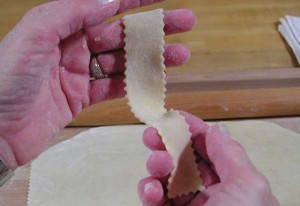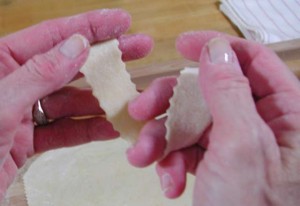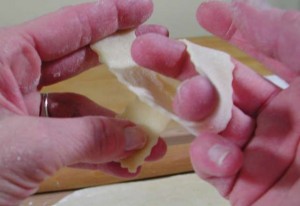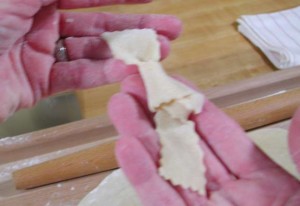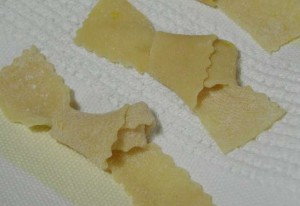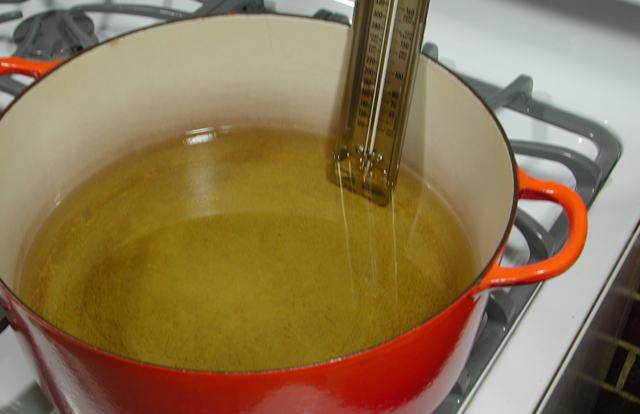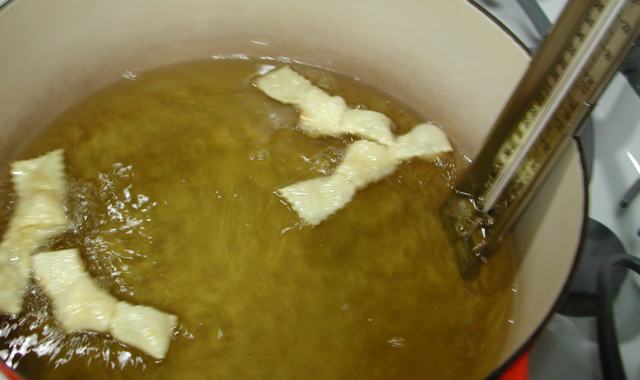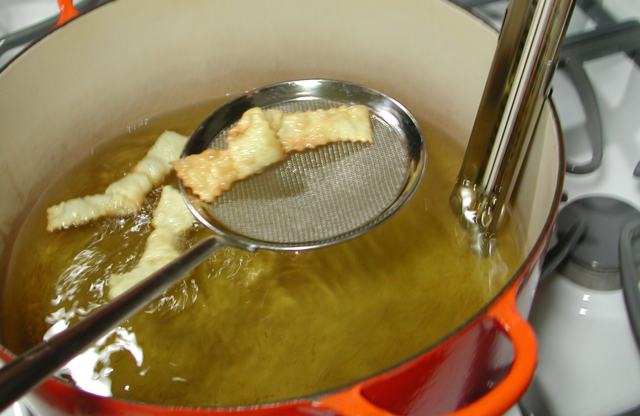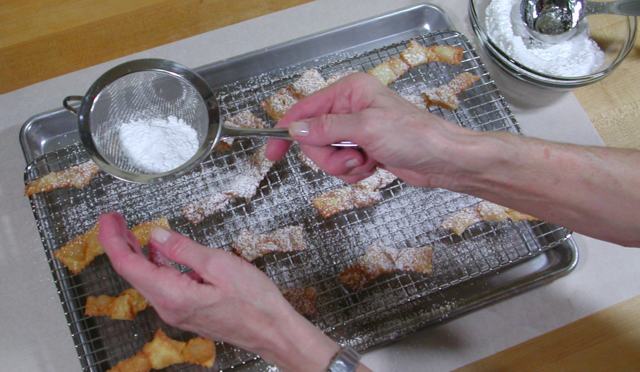Topic Index
The font size for a topic word is sized by the number of articles that reference that topic. The more articles the bigger the font.
Click on a word to search for posts with that topic. This page will reload with the search results.
Basil Blueberry Swirl Gelato
I have never been tempted by desserts with savory components. Somehow they always seemed wrong to me, so when I developed a craving for basil gelato I was surprised. Maybe it started with gorgeous peaches. Bart brought home a dozen of the most fragrant and perfectly ripe pieces of fruit I have seen all summer. My first thought was to slice the peaches, toss them in basil simple syrup and keep life easy. Then I remembered the blueberries in the refrigerator. Next, my eye drifted to my ice cream maker, and I was all in for this one.
The basil gelato base is lightly flavored, a lovely match for the blueberry swirl. Use more basil if you must, up to 50% more, but be careful, tasting occasionally after 15 minutes to be certain the infusion does not take on a bitter edge. I was concerned that the blueberry swirl might not have the body, taste-wise, to stand up to the basil, so I added some Mandorla grappa. The bitter almond and dark cherry taste of the grappa did the trick, brightening the blueberry flavor and bringing it into tight focus. This gelato is wonderful by itself, right out of the container, but served with fresh or poached yellow peaches or nectarines, or even berries, it is a very special summertime treat indeed.
Basil-Blueberry Swirl Gelato
Makes about 1 quart
After a few hours in the freezer, this takes on the perfect consistency, but after a longer freeze will be quite firm. If you find the gelato too firm to scoop, just leave it at room temperature for a few minutes. It will soften beautifully.
2 cups whole milk
¾ cup heavy cream
½ cup granulated sugar
4 large egg yolks
20 basil leaves, coarsely chopped
Pinch of kosher salt
1 ¼ cup blueberries
1 tablespoon granulated sugar
1 tablespoon fresh lemon juice
1-2 teaspoons Nardini Mandorla Grappa
Peaches, nectarines or fresh berries to serve alongside
basil leaves for garnish
Make the basil gelato:
In a medium saucepan combine milk, cream, granulated sugar, basil, and kosher salt. Cook over medium heat, stirring occasionally until the sugar has dissolved. Continue cooking until small bubbles form around the edges of the pan. Remove from the heat, cover pan and set aside to steep for twenty minutes. Strain the mixture, and return it to the pan, reheating briefly. Discard the basil.
While the mixture is heating, separate the eggs, placing the yolks in a medium heat-proof bowl, reserving the whites for another use. Whisk the egg yolks until slightly lightened. Slowly dribble half of the hot milk mixture into the beaten yolks, whisking all the while. Return the mixture to the saucepan and cook over medium heat. Use a silicone spatula to stir and scrape the bottom and sides of the saucepan until the mixture coats the back of the spatula, or reaches 180 degrees F. Do not boil.
Place a strainer over a medium stainless steel bowl and pour the mixture through. Set the bowl containing the gelato base over a second, larger bowl half-full of ice water to cool. Stir occasionally, being careful that no water seeps into the gelato base, until the mixture is cool. Cover and refrigerate 6 hours or overnight to chill thoroughly.
Make the Blueberry Swirl:
Place the blueberries, granulated sugar and lemon juice in a small saucepan and cook over medium-low to medium heat, crushing the berries as they soften and stirring often to prevent sticking and scorching. Cook until a silicone spatula leaves a broad trail when drawn across the bottom of the pan and mixture forms a thick sauce, about 12 to 15 minutes. Place a fine mesh strainer over a bowl. Use a spatula to press the mixture through the strainer, leaving the seeds and skins behind. Use a clean spatula to scrape the mixture that clings to the underside of the strainer into the bowl. This should yield about ¼ cup of puree. Discard seeds and skins. Add grappa to the puree, and stir to combine. Refrigerate until cold.
Make the gelato:
Pour the chilled base mixture into an ice cream/gelato maker and process according to the manufacturer’s directions.
Add the swirl:
When gelato has finished churning, Remove the cannister from the machine and transfer one half of the gelato to a chilled storage container, smoothing the top slightly. Pour one half of the blueberry mixture atop gelato and swirl or fold gently using just a few strokes, lifting and swirling the blueberry mixture. Repeat with the remaining ingredients. Stir as little as possible to retain rivulets of blueberry. Smooth the surface of the gelato. Place a piece of plastic wrap directly atop the gelato, and transfer to the freezer 4 to 6 hours to harden and cure.
Food Nerd Notes: To those of you who are wondering, yes, I finally got my fancy ice cream maker. I love it. Come on over.
Further reading:
Gelato!: Italian Ice Creams, Sorbetti, and Granite
by Pamela Sheldon Johns
Paperback: 112 pages
Publisher: Ten Speed Press (May 1, 2008)
Language: English
ISBN-10: 1580089232
ISBN-13: 978-1580089234
The Perfect Scoop: Ice Creams, Sorbets, Granitas, and Sweet Accompaniments
by David Lebovitz
Paperback: 256 pages
Publisher: Ten Speed Press (May 4, 2010)
Language: English
ISBN-10: 158008219X
ISBN-13: 978-158008219
The Ciao Bella Book of Gelato and Sorbetto: Bold, Fresh Flavors to Make at Home
Publisher: Clarkson Potter (May 11, 2010)
Hardcover: 176 pages
Language: English
ISBN-10: 0307464989
ISBN-13: 978-0307464989
Sweet Cream and Sugar Cones:
90 Recipes for Making Your Own Ice Cream and Frozen Treats from Bi-Rite Creamery
Hardcover: 224 pages
Publisher: Ten Speed Press (April 17, 2012)
Language: English
ISBN-10: 1607741849
ISBN-13: 978-1607741848
Making Artisan Gelato:
45 Recipes and Techniques for Crafting Flavor-Infused Gelato and Sorbet at Home
Paperback: 176 pages
Publisher: Quarry Books (January 1, 2009)
Language: English
ISBN-10: 159253418X
ISBN-13: 978-1592534180
A Passion for Ice Cream:
95 Recipes for Fabulous Desserts
by Emily Luchetti
Hardcover: 224 pages
Publisher: Chronicle Books; First Edition (April 27, 2006)
Language: English
ISBN-10: 0811846024
ISBN-13: 978-0811846028
Note: You can click on any picture to see a slide show!
I have no affiliation with any product, manufacturer, or site mentioned in this article.
Mirtilli Mandorla Pops
Blueberry Grappa Pops
I was inspired to make these pops as I looked through my copy of People’s Pops by Nathalie Jordi, David Carrell and Joel Horowitz. The authors are the owners of New York City’s People’s Pops. They manufacture thousands of Pops per week, but it was not always that way.
Like so many artisanal producers, they started out small using the very same home pop maker I do. Although their equipment has been upgraded, their Pops are the same. They are still made from best quality fresh fruit, vegetables and liquor and sweetened with simple syrup just as they were on Day One. Read the remainder of this entry »
Acqua di Cedro – a Drink and a Panna Cotta
 Move over Limoncello. Acqua di Cedro has arrived. This clear liqueur is made with citron, cedro in Italian (botanical name – Citrus medica.) Poor unattractive and underused citron, aside from its candied peel used for Christmas baking, it is pretty much ignored in my kitchen. Not so however on my dressing table where its essential oils form the base of many of my favorite perfumes. This most ancient of citrus with its gnarled and bumpy skin is said to have flourished in the Hanging Gardens of Babylon and was brought to Italy by Alexander the Great – this baby’s got some history behind it. Read the remainder of this entry »
Move over Limoncello. Acqua di Cedro has arrived. This clear liqueur is made with citron, cedro in Italian (botanical name – Citrus medica.) Poor unattractive and underused citron, aside from its candied peel used for Christmas baking, it is pretty much ignored in my kitchen. Not so however on my dressing table where its essential oils form the base of many of my favorite perfumes. This most ancient of citrus with its gnarled and bumpy skin is said to have flourished in the Hanging Gardens of Babylon and was brought to Italy by Alexander the Great – this baby’s got some history behind it. Read the remainder of this entry »
Crostoli
“Mamma, Che buona!” My father William Anthony Crocetti, born Guglielmo, did not speak English until he went to grade school. So I have no doubt that was what he exclaimed every time he ate the crostoli his mother made in her kitchen at 319 South Sixth Street in their south end neighborhood of Steubenville, Ohio. I wasn’t there, but those were his words. Senza dubito. And I bet Dino echoed his big brother.
Italians have been making these treats for hundreds of years. A recipe even appears in Pellegrino Artusi’s seminal cookbook, L’Arte di Mangiar Bene (The Art of Eating Well), first published in 1891. Although these delightful pastry knots are the prototypical Carnevale indulgence, they are also served at Christmas, New Year’s and Easter. This type of dolci is called nastri delle suore (nun’s ribbons), but that would never do for Italy, a country whose inhabitants identify themselves by regional ties first and as Italians second. Twenty regions – more than twenty names. These treats are called galani or frittelle alla Venezia in Venice and the Veneto, crostoli in Friuli, cenci (rags and tatters) or donzelli (young ladies) in Tuscany, frappe in Umbria, sfrappole or lattughe (lettuces) in Emilia-Romagna, chiacchiere (gossips) in Lombardy, chiacchiere di suore (nun’s gossips) in Parma, bugie (lies) in Piemonte and gigi in Sicily. Da vero. Call them what you will, they are fried dough, and I love fried dough. Like my father, I grew up eating these deep fried delights.
We called my grandmother Mom, and no typical nonna was she. When she arrived at our home I could always tell if she had a treat for us; instead of exiting her car and making her way directly up our driveway she went first to her passenger door, opened it and removed a long flat box. Then up our driveway she walked, box in hand, the clack-clack-clack of her Spring-o-lator shoes announcing her approach. We never knew what she had in that box, but we always knew it would be good. We four kids, my brothers Guy and Marc and my sister Toni and I, loved the cookies and we gobbled them up. My mother could always tell who had done most of the gobbling – the powdered sugar on the guilty party’s hands, face and chest was a dead giveaway. In fact that is how these cookies got their Piemontese name, bugie – liar’s cookies – as in “No Mamma. It wasn’t me, no mamma. I don’t know who ate the cookies…” Another of this cookie’s colorful names is chiacchiere or gossips. Some say the name came from the ladies of Lombard and the nuns of Parma who ate them as they gossiped. Still another source tells us the name originated with the sound the knots make when dropped in the cooking oil – “Pssst !” – just like the town gossip as she summons her listeners. Great stories all, which ever is true.
This cookie has a variation for every nonna. Some call for grappa, others get their alcohol kick from Gran Marnier, vin santo, white wine or rum while a few eschew spirits altogether. In Tuscany they are often made with olive oil in place of butter, and some regions use lard or shortening. Some use orange in place of lemon or no citrus at all. For the finishing touch, some cooks use confectioner’s sugar while others choose cinnamon sugar. As to the shape, some are plain ribbons, some are formed into pretzel-like shapes while others are twisted and pinched in the middle. You will also find flat squares or rectangles, some with one or two slits along the middle. This is the tradition of Italy’s beloved nonne at work, the tradition of variation on a theme that makes this cuisine so inviting, so forgiving, and so much fun.
Flour in Italy is classified by how finely it is milled, either 1, 0 or 00. Doppio zero is the most finely milled and feels like talcum powder. Do not confuse how finely ground the flour is with its protein content. Any strength flour can be ground into doppio zero. Just as we have pastry flour, all-purpose flour and bread flour with their varying protein contents, so do the Italians. They just have the added luxury of varying degrees of milling. To see the full range of flours available to the Italian cook go to the Molino Caputo website. I use a doppio zero flour that is comparable in protein content to our American all-purpose flour. Doppio zero flour is available at Italian markets and Amazon. com. If you can not find it, regular all-purpose flour will do nicely. Use the same amount the recipe calls for.
Mom made her dough by hand in the traditional manner – mounding her flour on a wooden board, making a “well” in the center, filling it with the ingredients and incorporating them with a fork. In a concession to the age of the mechanized kitchen I use my KitchenAid.
This dough is a dream to work with. Do not be intimidated by the idea of rolling it very thinly. You will be able to do so with great ease. Honest. On the subject of frying oil – Mom used solid Crisco, and there is no reason to change that. But if you have something else on hand, peanut oil, vegetable oil, feel free to make use of what is in your pantry. Mom drained the cookies on brown grocery bags. Some cooks use paper towels. I have found that placing the fried cookies directly on a cooling rack suspended over a sheet pan works very well.
A note about these cookies: they fry up very quickly, so be sure to have everything you need close at the ready. Banish the kids and pets from the kitchen. You will be working with a large volume of very hot oil.
And finally, do not overcook the crostoli. If you do you will not taste the grappa!
As the Italians say “Divertiti!” Have fun!
Form knots and place on a floured tea towel.
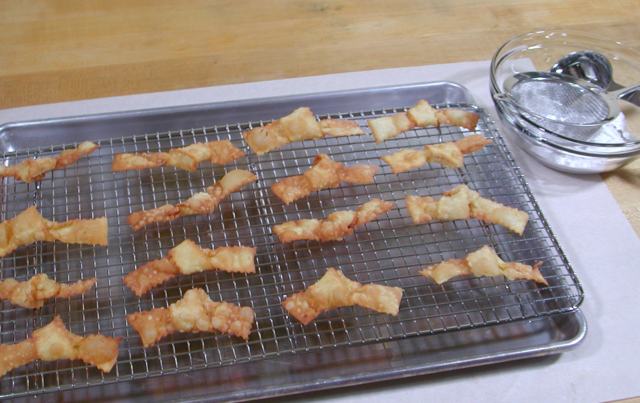
To keep things neat, place your tray and rack on a large piece of parchment. Have ready a bowl of confectioner's sugar and a small strainer.
Crostoli
makes about 3 ½ dozen
200 grams 00 flour (This should measure 1 ½ cups when lightly spooned into measuring cups, then leveled with a flat edge.)
1 tablespoon granulated sugar
zest of 1 lemon
generous pinch salt
1 large egg, lightly beaten
1 tablespoon unsalted butter, at room temperature
1 tablespoon grappa
1 teaspoon vanilla extract
3 to 4 tablespoons whole milk
shortening or oil for frying
confectioner’s sugar
In a mixer bowl fitted with paddle attachment, combine the flour, sugar, lemon zest and salt. With mixer running add egg, butter, grappa and vanilla. Gradually add 3 ½ tablespoons of milk to form a soft malleable dough. Remove dough from bowl, pat into a disk. Wrap in plastic, and set aside to rest for 1 hour.
Line a sheet pan or tray with a tea towel. Lightly dust the towel with flour. Set aside. Divide dough in 2 pieces, keeping the one you are not using wrapped in plastic or covered with a towel. On a lightly floured board, roll out dough as thinly as you can, about 1/16-inch thickness; dough should be almost translucent. Using a ravioli cutter cut dough to form ribbons 6 inches long and 1 inch wide. Tie a knot in the center of each ribbon, and place on the towel-lined pan in a single layer. Keep the knots covered as you work.
Meanwhile heat a generous amount of oil to 350 degrees in a heavy deep-sided pan. A candy thermometer placed on the side of your pan assures correct cooking temperature. Have ready a rack placed over a sheet pan. Fry the knots, a few at a time, until they color, about 20 to 30 seconds. Remove with a slotted spoon, spider or metal tongs, and place on rack to drain. Sprinkle liberally with confectioner’s sugar. Crostoli are best eaten the day they are made.
Note: You can click on any picture to see a slide show!
